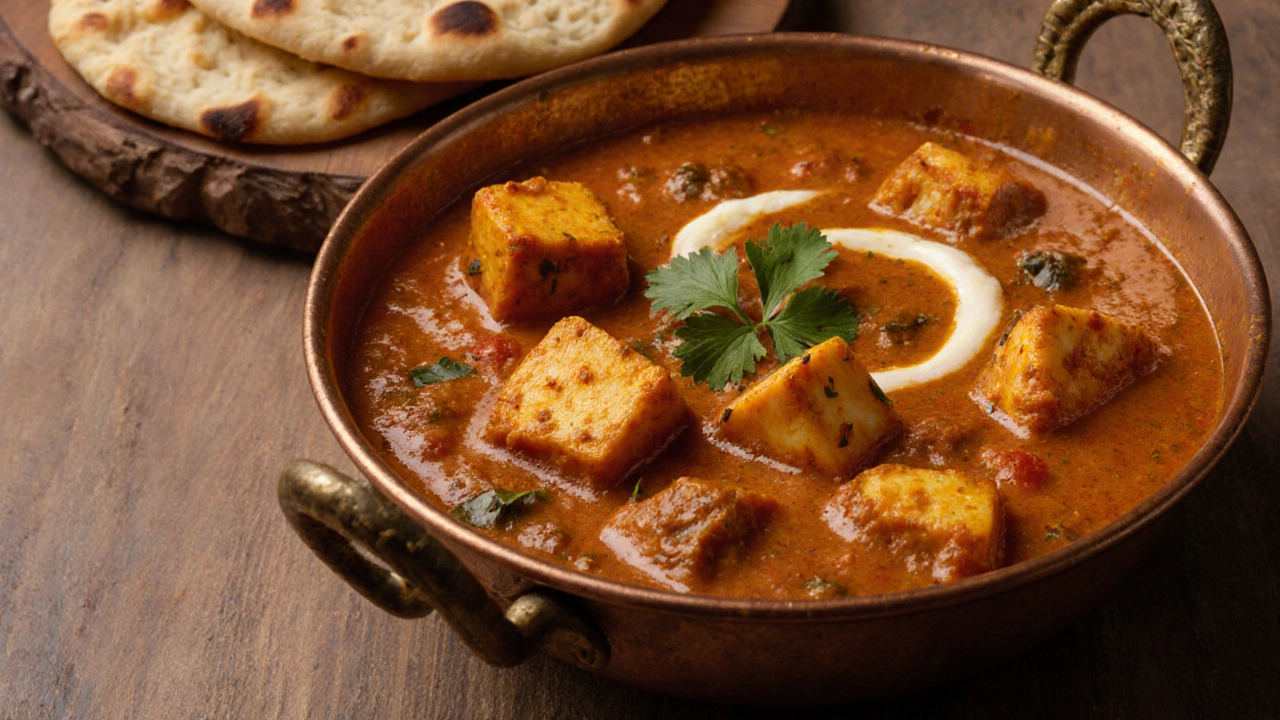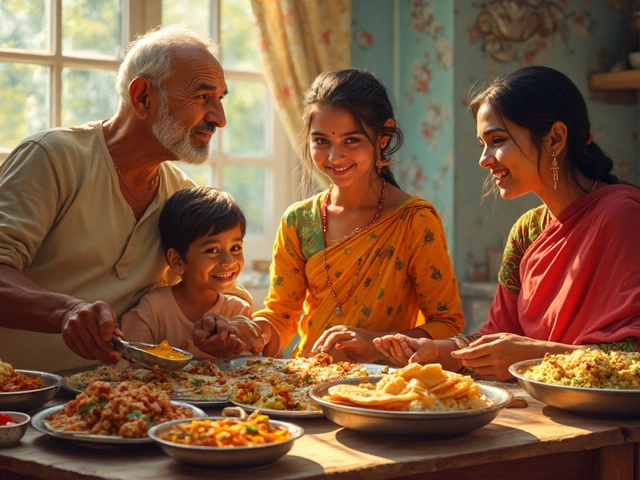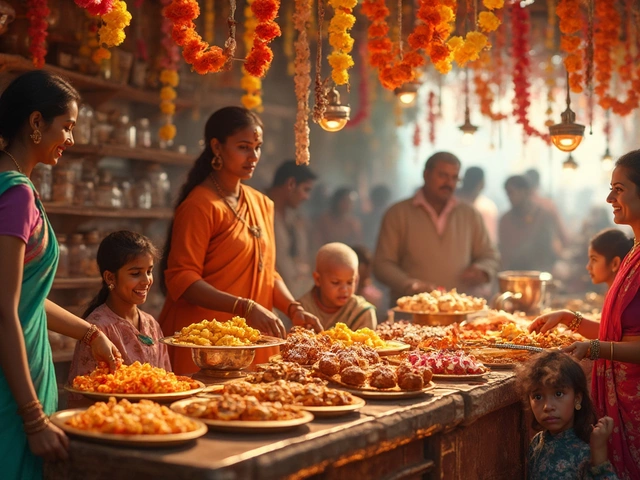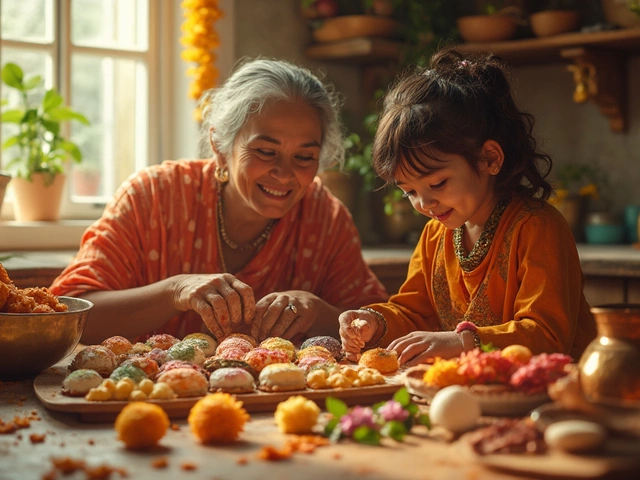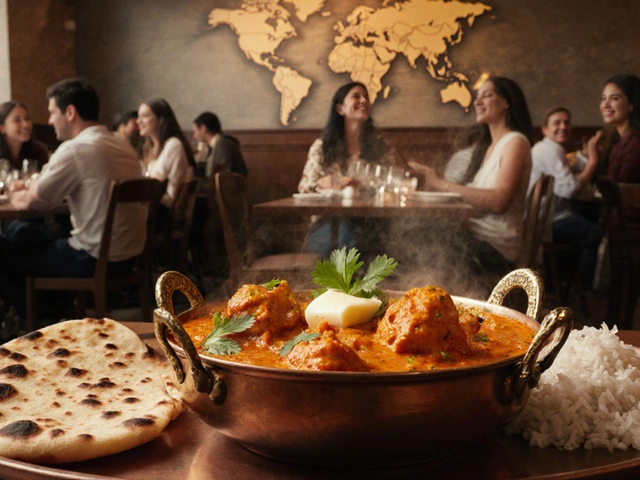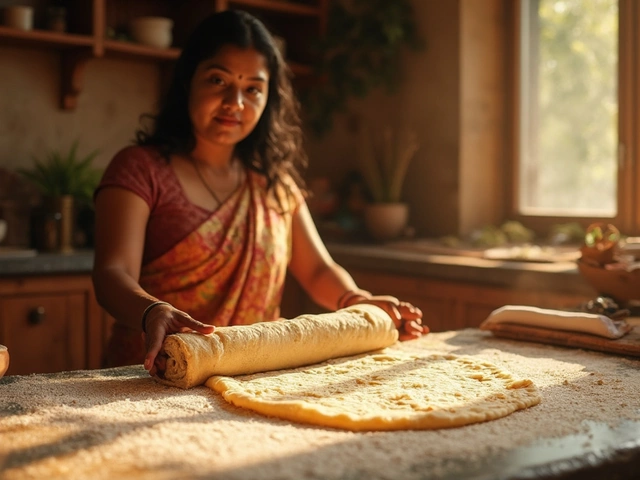Vegetarian Dish Finder
Let's find your perfect vegetarian Indian dish
Answer these 4 simple questions to get a personalized recommendation
If you've ever sat down at an Indian restaurant and stared at a menu with 30 vegetarian options, you're not alone. The question isn't just what's the best vegetarian Indian dish to order-it's which one will actually make you come back for more. Not every dish is created equal. Some are creamy and comforting, others are bold and spicy, and a few are so deeply rooted in tradition that they’ve shaped entire regional cuisines. So which one truly deserves the top spot?
Paneer Butter Masala: The Crowd Favorite
Ask ten people what their favorite Indian dish is, and at least seven will say paneer butter masala. It’s rich, creamy, and mildly sweet with a hint of tomato and spices. The paneer-soft, fresh cheese cubes-soaks up the sauce like a sponge, making every bite tender and flavorful. What makes this dish special isn’t just the taste; it’s the balance. The butter and cream mellow out the heat from Kashmiri chilies and garam masala, while a touch of sugar brings out the natural sweetness of the tomatoes. It’s not too spicy, not too heavy, and it pairs perfectly with naan or jeera rice. Restaurants in Delhi, Mumbai, and even small towns in Punjab serve it with pride. It’s the dish people order when they want to feel comforted, not challenged.
Chana Masala: The Flavor Bomb
If you love bold, tangy, and slightly smoky flavors, chana masala is your go-to. Made with chickpeas cooked in a thick tomato-onion gravy with cumin, coriander, amchoor (dry mango powder), and black salt, this dish punches you in the best way. The acidity from the amchoor cuts through the earthiness of the chickpeas, while the spices cling to every bean. It’s not just a side-it’s a meal. In street food stalls across North India, you’ll find chana masala served in small bowls with a squeeze of lemon and a sprinkle of chopped cilantro. It’s cheap, filling, and packed with protein. If you’ve ever eaten it with a side of bhatura (fried bread), you know why it’s a favorite. It’s the kind of dish that sticks with you long after the plate is empty.
Dal Makhani: The Slow-Cooked Luxury
Dal makhani isn’t just lentils. It’s a labor of love. Made with black lentils (urad dal) and kidney beans (rajma), slow-cooked for hours with butter, cream, and whole spices like cinnamon and cardamom. The result? A velvety, almost custard-like texture that’s deeply savory and slightly sweet. This dish comes from Punjab, where families traditionally cook it overnight on low heat. The slow simmering breaks down the lentils until they’re silky, and the butter melts into every inch. It’s not spicy, but it’s intensely flavorful. Order it with plain rice or roti, and you’ve got one of the most satisfying vegetarian meals in Indian cuisine. Many restaurants now serve it with a side of ghee drizzle-don’t skip it. That final touch turns good into unforgettable.
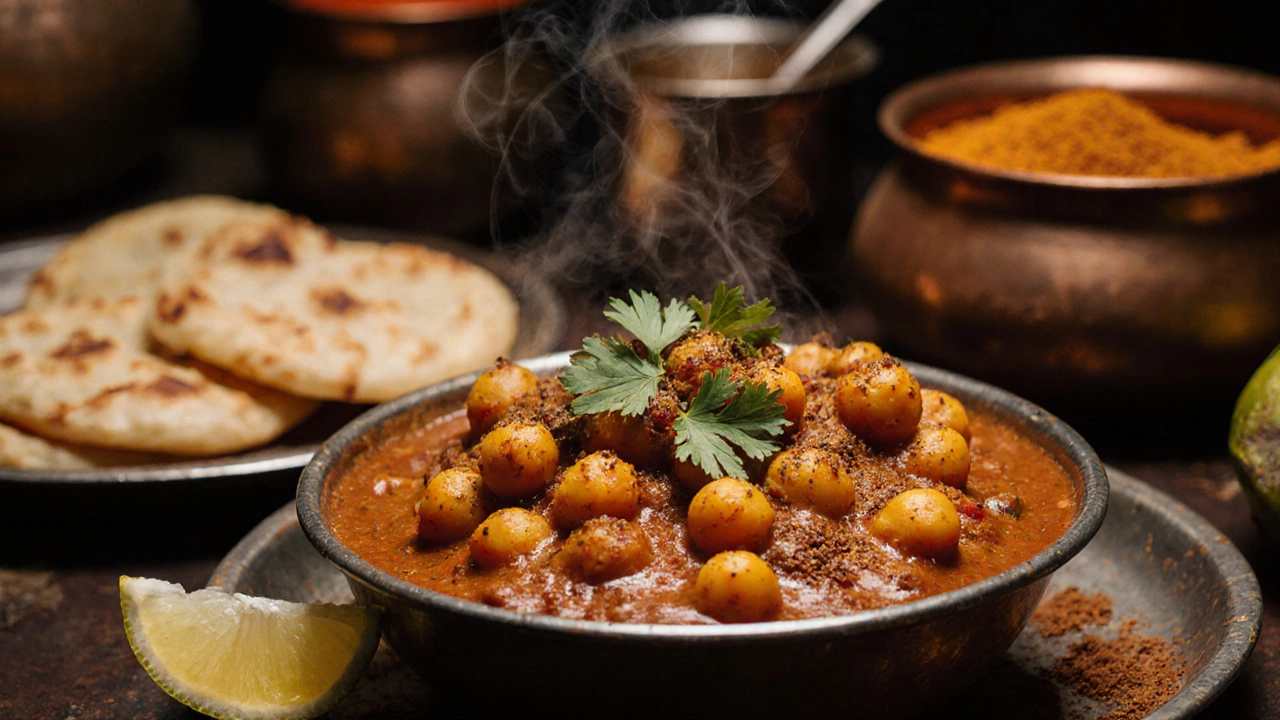
Vegetable Biryani: The Celebration Dish
Biryani is often thought of as a meat dish, but the vegetarian version is just as impressive. Vegetable biryani layers fragrant basmati rice with sautéed carrots, peas, potatoes, cauliflower, and sometimes cashews and raisins. The rice is cooked with whole spices like cloves, bay leaves, and star anise, then finished with saffron-infused milk. The aroma alone is enough to make your mouth water. What sets it apart is the dum cooking method-sealing the pot and letting the steam slowly cook everything together. This traps the flavors and creates a subtle crust at the bottom called the tahdig. It’s not just a side dish; it’s a centerpiece. You’ll find it at weddings, festivals, and Sunday dinners across South India and Hyderabad. It’s the dish you order when you want to feel like you’re eating something special.
Aloo Gobi: The Simple Classic
Don’t underestimate aloo gobi. Potatoes and cauliflower, roasted with turmeric, cumin, and a pinch of asafoetida, then finished with fresh cilantro. It sounds basic. But when done right, it’s the perfect example of how Indian cooking turns humble ingredients into something extraordinary. The potatoes get crispy on the edges, the cauliflower stays tender but not mushy, and the spices coat everything in a golden, aromatic layer. It’s dry, not saucy, which makes it great for those who prefer less gravy. It’s also one of the few vegetarian dishes that tastes even better the next day. Many home cooks in Gujarat and Rajasthan make it weekly. It’s the kind of dish that doesn’t need fancy ingredients-it just needs time, patience, and good oil.
Why These Five Stand Out
There are hundreds of vegetarian Indian dishes, but these five rise above the rest for a reason. They’re not just popular-they’re iconic. Paneer butter masala wins for its universal appeal. Chana masala for its punchy flavor. Dal makhani for its depth and tradition. Vegetable biryani for its grandeur. And aloo gobi for its quiet perfection. Each one represents a different side of Indian cooking: richness, spice, slow-cooked comfort, celebration, and simplicity.
If you’re new to Indian food, start with paneer butter masala. It’s the gateway dish. If you want something more adventurous, go for chana masala. If you’re looking for something soul-soothing, order dal makhani. And if you’re dining with a group, get vegetable biryani to share. Aloo gobi? Always order it as a side-it’s the unsung hero.
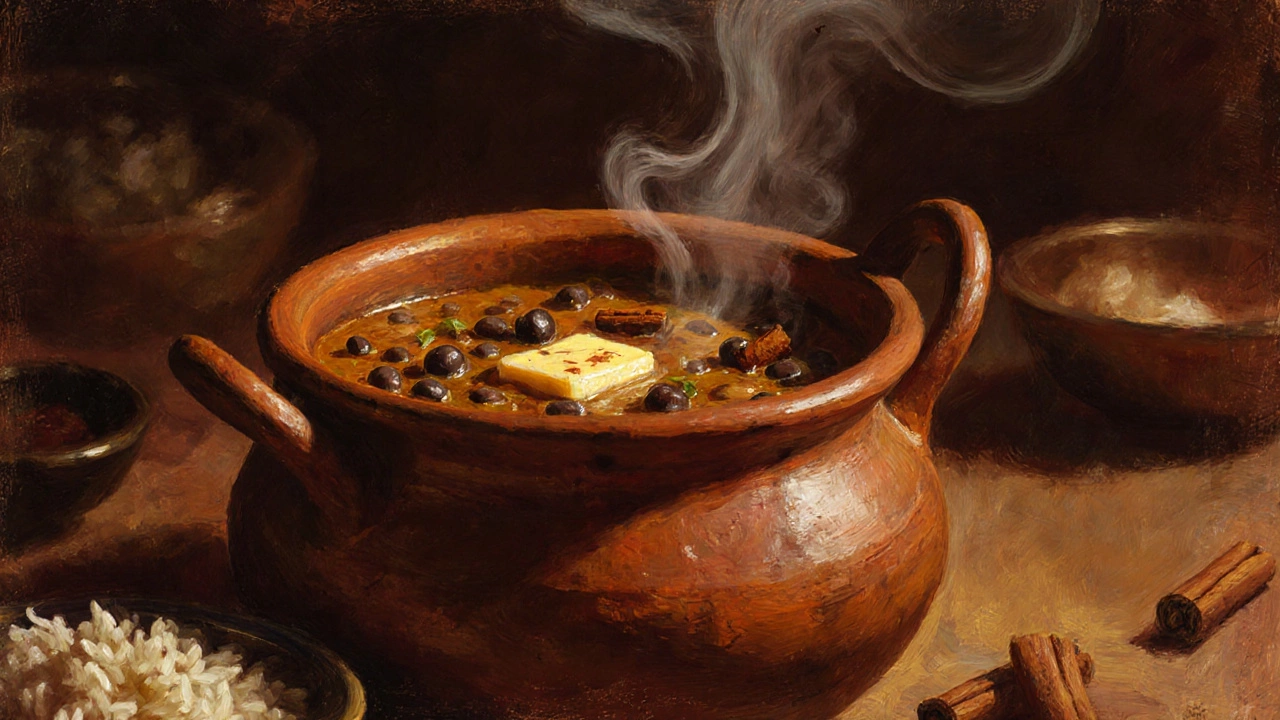
What to Avoid When Ordering
Not every vegetarian dish is worth ordering. Skip the “vegetable curry” that’s just boiled veggies in watery sauce. Avoid dishes labeled “mild” if they’re actually bland-Indian food isn’t about removing spice, it’s about balancing it. Also, be wary of dishes with too many ingredients listed. The best ones usually have five or fewer core components. Quality matters more than quantity.
Pro Tip: Ask for the Kitchen’s Special
Many Indian restaurants have a daily vegetarian special not on the menu. It’s often a family recipe passed down through generations. Ask the server: “What’s the most popular vegetarian dish your kitchen makes?” You might end up with a dish you’ve never heard of-and one you’ll never forget.
Is paneer butter masala spicy?
Paneer butter masala is typically mild to medium in heat. The spices are balanced with cream and butter, making it approachable even for those who can’t handle spicy food. If you prefer less heat, ask for it "extra mild"-most kitchens will adjust it.
Can I make dal makhani at home?
Yes, but it takes time. Traditional dal makhani simmers for 6-8 hours. You can speed it up with a pressure cooker (about 45 minutes), but the slow version has a deeper flavor. Use whole black lentils and kidney beans, not canned. Butter and cream are key-don’t skip them.
Is chana masala healthy?
Absolutely. Chickpeas are high in protein and fiber, and the spices like cumin and turmeric have anti-inflammatory properties. It’s low in fat unless you add extra oil or ghee. Skip the fried bread if you’re watching calories, and enjoy it with brown rice or whole wheat roti.
What’s the best side for vegetable biryani?
A simple raita-yogurt with cucumber and mint-is the classic pairing. It cools the palate after the rich, spiced rice. You can also add a side of pickle or a fresh salad with tomatoes and onions.
Why is aloo gobi so popular in Indian homes?
It’s cheap, easy, and uses ingredients that keep well. Potatoes and cauliflower are staples in most Indian kitchens. The dish requires no cream or butter, making it light yet satisfying. It’s also naturally gluten-free and vegan if made without ghee. That’s why it’s a weekly favorite in households from Punjab to Kerala.
Next Steps: What to Try Next
Once you’ve tried these five, expand your list. Try baingan bharta (smoky roasted eggplant), matar paneer (peas with paneer), or palak paneer (spinach and cheese). Each one adds a new layer to your understanding of Indian vegetarian cooking. Keep notes on what you like-spiciness, creaminess, texture-and use that to guide future orders. The best vegetarian Indian dish isn’t just the most popular one-it’s the one that makes you say, “I need this again.”





